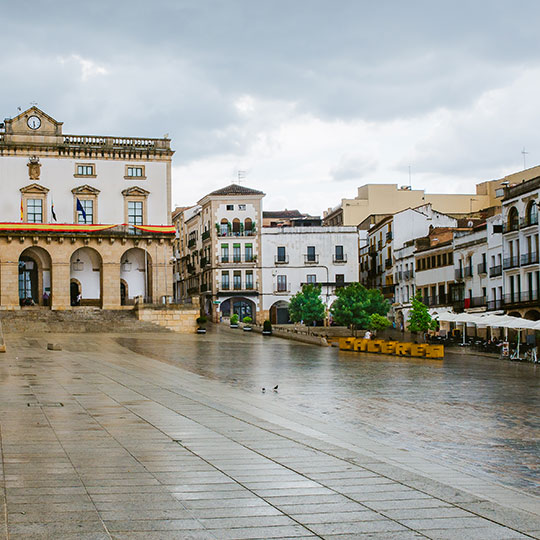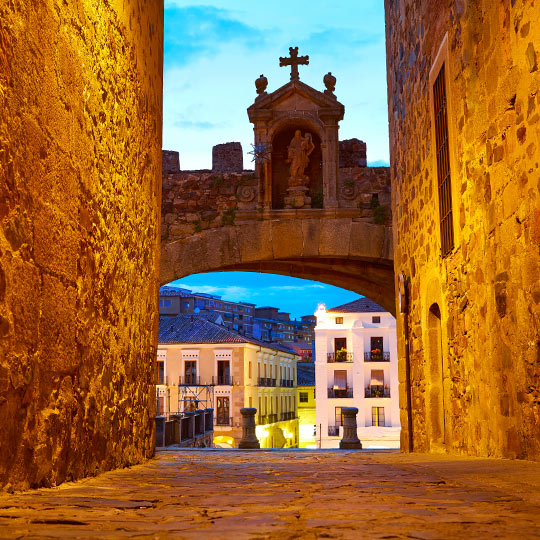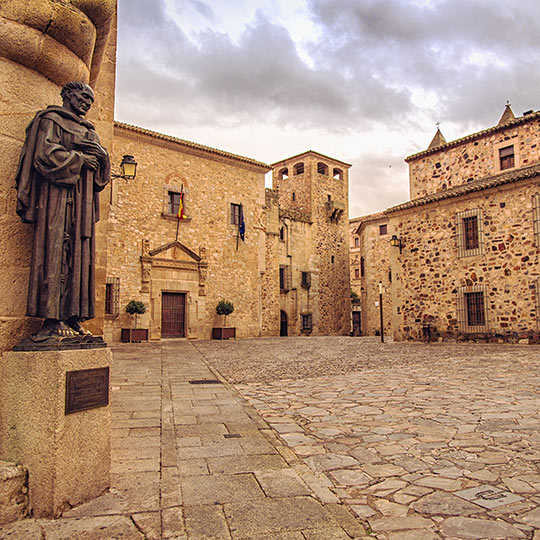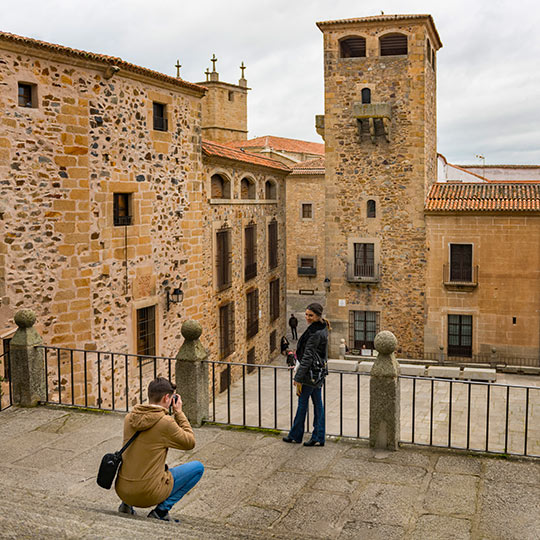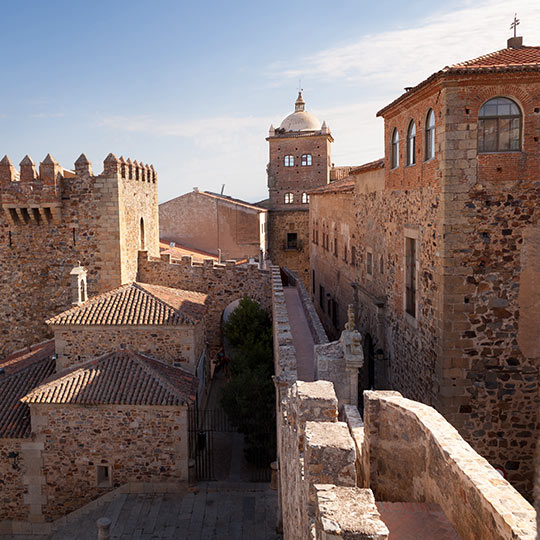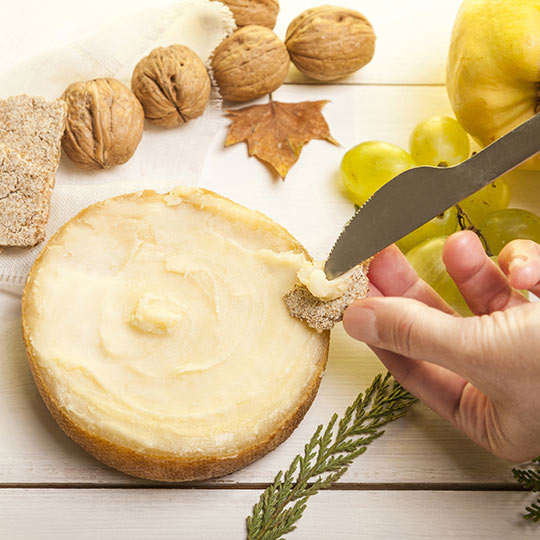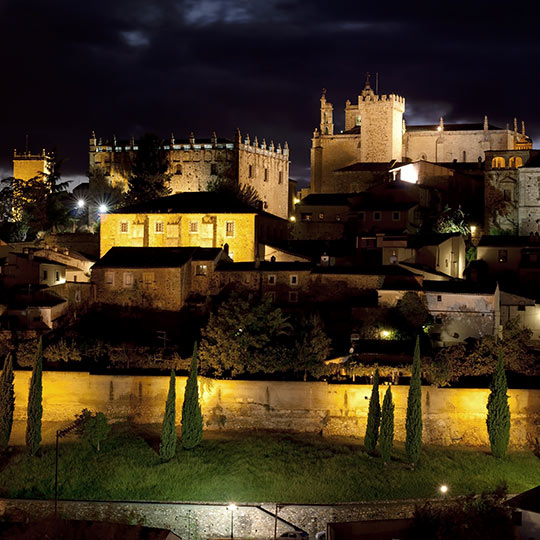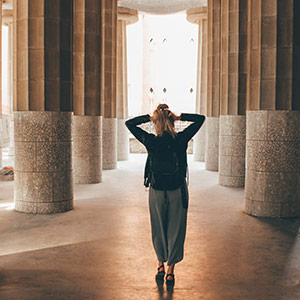The Plaza Mayor square
The Plaza Mayor square is undoubtedly an essential stop. It is surrounded by a 16th-century porticoed arcade, where you can find:- The City Hall, a lovely 19th century building.- The Bujaco Tower, a historical landmark and the most important building in the city, standing 25 metres high and dating back to the Moorish times. Inside the tower you can also visit the Three Cultures Visitor Centre. You simply can’t leave without climbing to the top of the tower.- The Tower of the Pulpits has Christian origins and is 16 metres high. It is adjoined to the external part of the city wall. You can visit it by entering from the Bujaco Tower.
